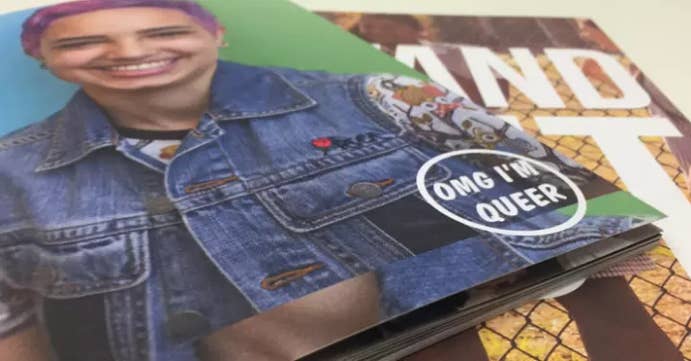It's not uncommon in Australia to hear the word "but" added to the phrase "No child should be bullied...".

The caveat is the result of more than a year of nationwide drama over the Safe Schools Coalition (SSC), a program designed to stop the bullying of LGBTI children in schools.
Launched in 2014, the SSC went all but unnoticed for two years until, in early 2016, conservative media outlets and politicians hitched themselves to a campaign by right wing Christian lobby groups against the program.
Significant controversy followed, sending confusing and contradictory messages about the SSC and what it hoped to achieve.
Federal funding for the SSC exhausts on June 30 this year, but Victoria, Western Australia and the Australian Capital Territory will stump up funds to keep the program running.
But one big part of the confusion around Safe Schools is the idea that it replaces wider anti-bullying programs, instead of acting as an LGBTI-specific part of them.
Let's use NSW as an example. On the weekend, education minister Rob Stokes confirmed the state would not fund the SSC when federal funding ends.
"Bullying will never be accepted in NSW public schools whether it be because someone is overweight, gay, based on the colour of their skin or for any other reason," Stokes said in a statement.
"The NSW Department of Education is currently developing an updated anti-bullying strategy that will be a new resource available for teachers from the beginning of term three."
The ensuing media coverage looked like this – heavily implying that once Safe Schools was taken away, a new program would be able to cover all types of bullying.


In response to a pro-Safe Schools op-ed published in the Sydney Morning Herald, letter writers expressed anger that the Safe Schools program is focused on LGBTI kids.

One article in The Daily Telegraph quoted a government source who claimed the new strategy finally acknowledged that kids are bullied for a bunch of reasons:

The impression, then, was that aside from the 18 schools that had voluntarily adopted the SSC in the state, there was no support at all for kids being bullied in NSW.
How could this be?
We asked Stokes why there wasn't already an general anti-bullying program in NSW schools.
As it turns out... there is.

A spokesperson for the minister told BuzzFeed News the state already had a "significant focus" on general anti-bullying measures.
"The NSW Department of Education already provides a range of resources to schools to ensure students who are struggling in our schools, for whatever reason, are provided support," he said.
"NSW public schools are already required to develop and implement an anti-bullying plan. Resources are also already available to support schools in this area."
So, rather than replacing the Safe Schools Coalition, the new NSW strategy will be a revamp of the current strategy, which caters for students suffering from all types of bullying.
"Although a range of anti-bullying resources are available for teachers, NSW public schools will use the updated strategy as the approved resource from term three," the spokesperson said.
But as Safe Schools Coalition national director Craig Comrie told BuzzFeed News, many teachers asked for resources specifically for LGBTI kids, because there was a lack of knowledge in how to deal with these issues.
"Safe Schools is based on evidence that shows specific programs are required for different demographics," he said.
"LGBTI young people... their experiences are often unique. Having specific targeted programs that meet their needs and meet the needs of teachers is backed by evidence."
Safe Schools was never meant to replace general programs, or fix all bullying – it was to equip teachers with specific resources for situations and issues they were not adept in dealing with.
The minister's office did not respond to a question on whether NSW schools would be actively barred from continuing to use the Safe Schools Coalition resources, which will remain online.

The myth was perpetrated in other states too. Kevin Donnelly, who once reviewed the Australian curriculum and is a frequent critic of the SSC, urged Victoria to follow suit with NSW and replace the program with "a broader, more general program which targets all the ways students are bullied in schools."
Victoria's socialist Andrews government out on a limb as NSW drops Safe Schools for an actual anti-bullying program https://t.co/0l0LRl9zcz
But like NSW, numerous strategies, programs and resources to counter bullying of all types are already available around Australia, promoted by the federal government.
On the federal government's "Bullying. No Way!" website a video titled "Bullying Is Not OK" begins with these words: "Bullying can happen to anyone and it can happen anywhere. You can be bullied about how you look, what you're good at, or not good at. Where you come from or who your friends are."
The website links out to this resource on cyberbullying, developed by the Office of the eSafety Commissioner. There's also a cyberbullying resource by Indigenous writers.
The "Bullying. No Way!" website has worksheets on celebrating diversity and challenging prejudice. It links out to resources specifically related to appearance and weight.
None of these are focused on LGBTI bullying. There's also the government's Student Wellbeing Hub, which contains more resources.
There are also state programs. Victoria has the Bullystoppers website; the Queensland Schools Alliance Against Violence has a series of videos, factsheets and toolkits.
State resources go into specific types of bullying, too – the NSW Department of Education has a website devoted to stopping bullying that is based on racism and prejudice, with teaching resources for ages K-12.
The SSC resources do focus on LGBTI children, however they are one piece in a larger jigsaw puzzle.
